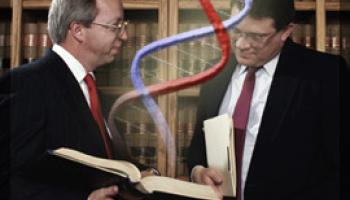Archival Notice
This is an archive page that is no longer being updated. It may contain outdated information and links may no longer function as originally intended.
Home | Glossary | Resources | Help | Contact Us | Course Map
Introduction to Strategic Voir Dire
Many potential jurors are familiar with the forensic applications of DNA evidence through popular television programming and will acknowledge it as a valuable tool in seeking justice. During voir dire, it is important for the prosecutor to elicit jurors' expectations about DNA and the source of their knowledge. This process will allow the prosecutor to educate jurors regarding common non-forensic uses of DNA typing, such as medical applications, paternity, mass disaster identification, and the identification of military personnel. Jurors' understanding of DNA and its many non-forensic applications is critical. It enhances the credibility and reliability the evidence holds with them.
In this topic you will learn about conducting a preliminary examination of prospective jurors to determine their competence or suitability as a member of the jury. Prosecutors in states where attorney voir dire of potential jurors is not allowed will gain insight into common juror concerns and potential areas that can be addressed throughout the use of written questions submitted to the court for consideration.
Additional Online Courses
- What Every First Responding Officer Should Know About DNA Evidence
- Collecting DNA Evidence at Property Crime Scenes
- DNA – A Prosecutor’s Practice Notebook
- Crime Scene and DNA Basics
- Laboratory Safety Programs
- DNA Amplification
- Population Genetics and Statistics
- Non-STR DNA Markers: SNPs, Y-STRs, LCN and mtDNA
- Firearms Examiner Training
- Forensic DNA Education for Law Enforcement Decisionmakers
- What Every Investigator and Evidence Technician Should Know About DNA Evidence
- Principles of Forensic DNA for Officers of the Court
- Law 101: Legal Guide for the Forensic Expert
- Laboratory Orientation and Testing of Body Fluids and Tissues
- DNA Extraction and Quantitation
- STR Data Analysis and Interpretation
- Communication Skills, Report Writing, and Courtroom Testimony
- Español for Law Enforcement
- Amplified DNA Product Separation for Forensic Analysts


